Hugh Chalmers was born on October 3, 1873. His parents, Thomas and Jeanette, had eight children; Hugh was the seventh. At age 14, Hugh Chalmers started work at the National Cash Register Company in Dayton, Ohio. It only took him a few years to climb the latter of success to a corner office with his title – Vice President – on the door.
In early 1907, auto manufacturer Roy Chapin, (the same Roy Chapin who later served as President Hoover’s Secretary of Commerce) from the E. F. Thomas Company (a small car company) approached Chalmers to persuade him to take the president’s job at the plant in Detroit. It was a perfect match. Within the year, Chalmers purchased the E. R. Thomas interests in the firm and renamed the operation the Chalmers Motor Company.
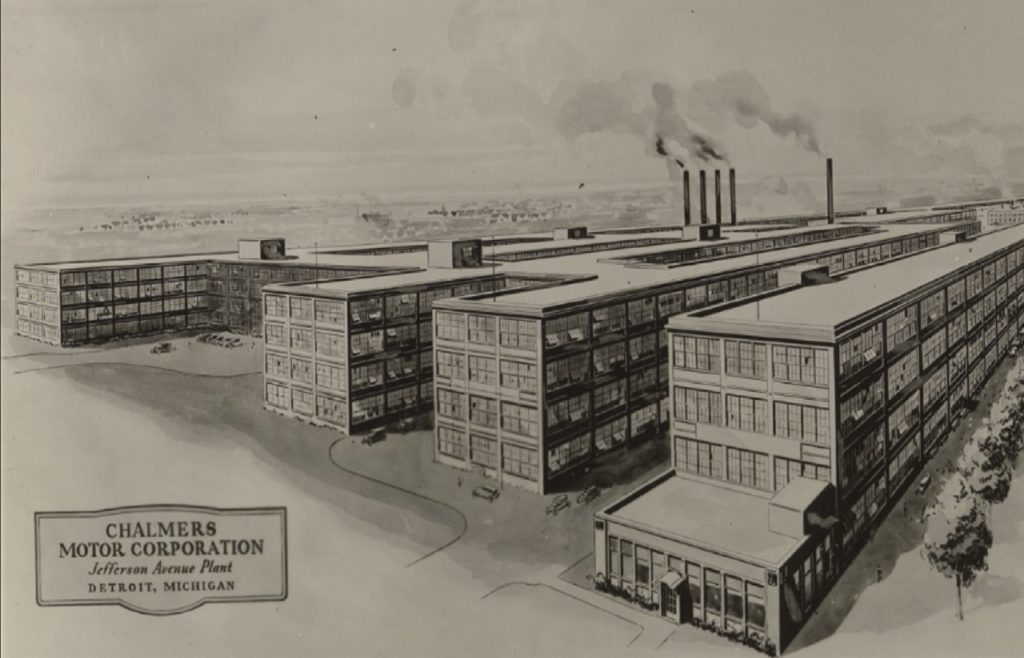
From the start the company earned a nationwide reputation for producing high-quality automobiles that were tough, durable, and well-engineered. Within the span of just three years, Chalmers became the eighth-largest American car manufacturer. Despite their success, the company faced increasing competition in the auto industry, especially from Ford, and sales began to decline due to Ford’s pricing policy on the Model-T.
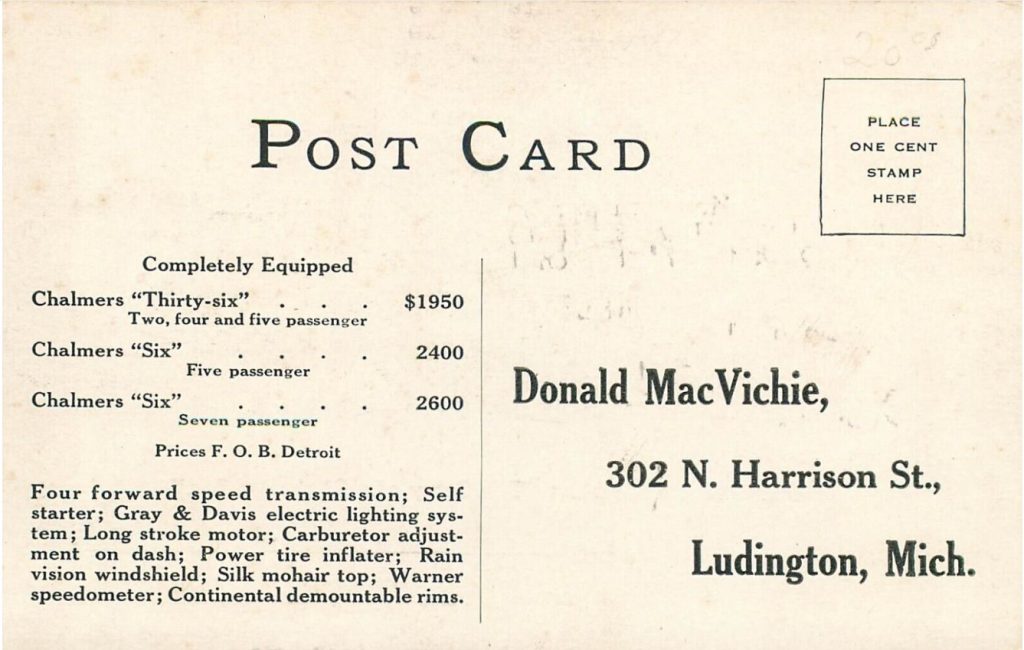
In the early 1920s, to re-coop and possibly increase their sales volume, Chalmers increased their catalog to five models; the Chalmers “36” became available in a two-, four-, and five-passenger models; the Chalmers “6” was available in five- and seven-passenger models.
Not surprising was the number of amenities the Chalmers cars had, including self-starters, rain vision windshields, and power tire inflaters. (From then, there would be no more standing along the side of the road until someone passed who owned a hand-pump.)
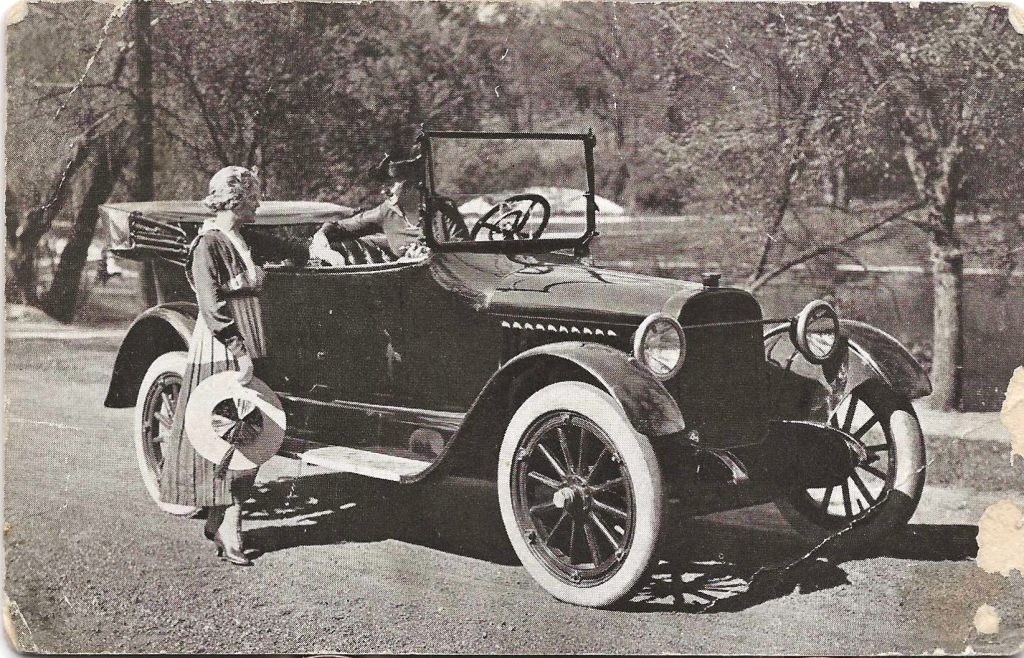
The early Chalmers “Six,” five-passenger touring car was a wildly popular car. Ownership was made easy by the low price of only $2,400. This may have been out-of-reach from many consumers of that era compared to the $850 price tag on a Ford Model-T, however, the “T” was never touted as a quality automobile.
One of the 1920s Chalmers “six” 5-passenger models was sold in Philadelphia to a Glassboro, New Jersey, industrialist who drove the car for more than a decade and then sold it to a young entrepreneur for use in a taxi service. It was the first business of its kind in the county.
The way the story goes could easily come from a Charles Dickens novel.
The Glassboro Taxi Service opened for business at 6 AM in the front parlor of a house on Main Street in Glassboro, with just one phone number, on Wednesday, April 1, 1936. During the first day of operations, all destinations incurred a flat-fee of 35¢. There is no solid evidence of the fee schedule after that first day, but in larger east coast cities, in that era, the first mile was 25¢ and additional half-miles were 10¢.
Sometime around the middle of May 1936, the taxi service received a request that would stand until canceled – every Saturday morning at exactly 11:30, the taxi should arrive at an address on North Pearl Street in Clayton – a neighboring village, about four miles south – to take passengers to the Roxi Theatre at 100 E. High Street in Glassboro, then make a return trip to Clayton at 3:45 PM.
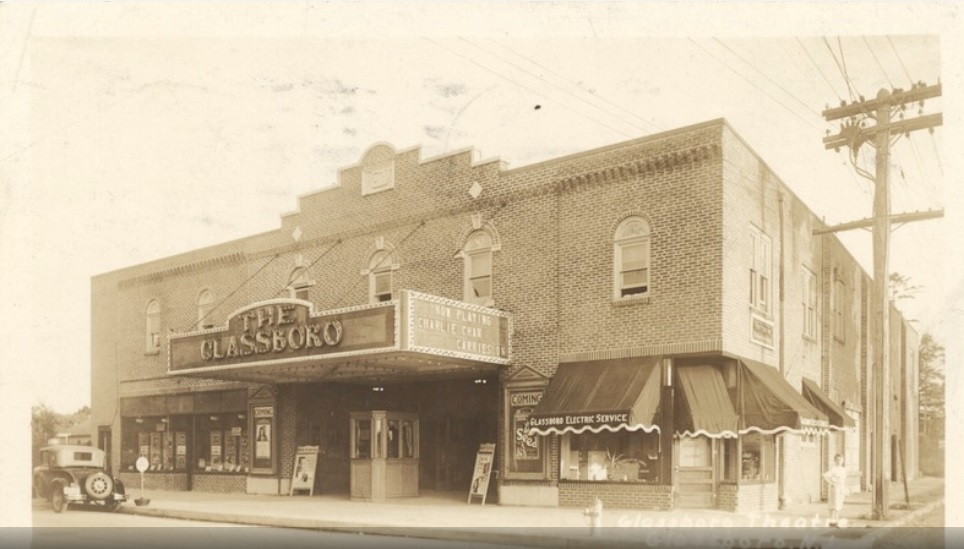
The person behind the request was an elderly gentleman known throughout the village as Mr. L. After the first few weeks of the Saturday trips to the Roxi, it was no secret that Mr. L. did not like going to the movies alone. He invited all the neighborhood children to join him. And so, it came about that each weekend started with a gathering of youngsters forming a queue on Mr. L’s front porch. After Mr. L. took his seat in the taxi, as many of the kids who could fit in the car were welcome to join him. He would pay for all their admissions and each youngster got his own bag of popcorn.
These random acts of kindness became legend in the area and Mr. L’s reputation for kindness was often likened to Santa Claus. It started soon after he moved to town during the Depression years. He was a man of habit and he had what may be called his “haircut” day. On the main street of town, the barbershop was located at the corner of his street. Once every other month, Mr. L would walk to his barbershop for a haircut and afterward go to the soda shop next door and purchase $1.00’s worth of penny candy. He then shared the candy with the kids walking home from school.
And, it didn’t end there. There are at least two newspaper accounts of Mr. L’s generosity. There was at least a five-to-seven-year period when his neighbors were invited to bring their children to his side porch on Christmas Eve where they would find toys for all their children – free for the taking. Only guesses can be made as to what he spent on toys for the neighborhood kids.
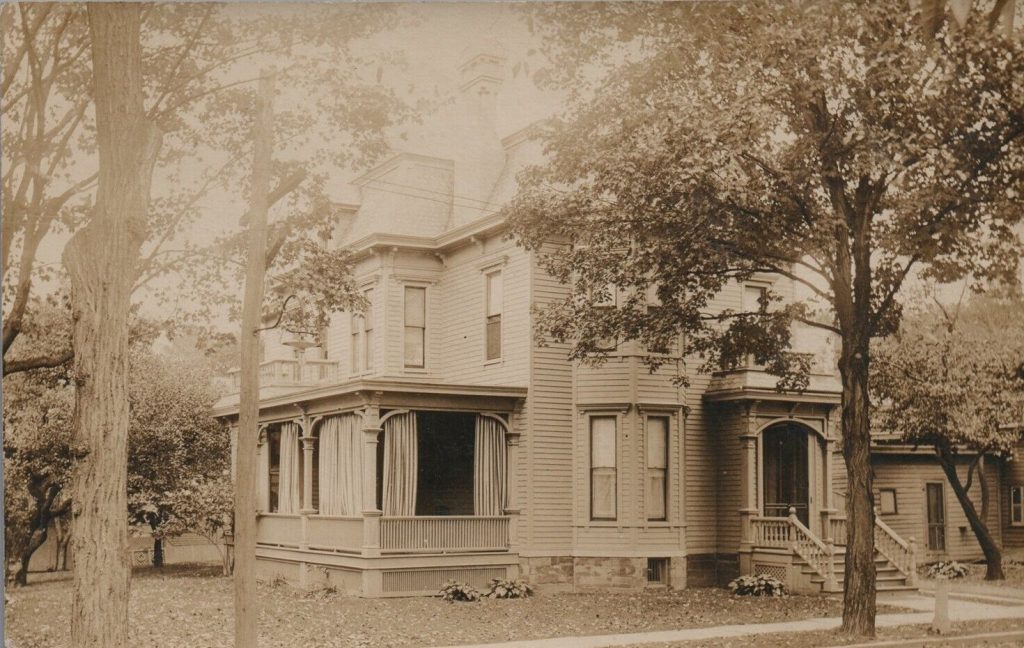
The story is legend, but the man was real. Many years later it was discovered that Mr. L. was an RCA-Camden executive who made lots of money but had no children of his own.
Why did he hire the taxi service instead of buying a car? We can only guess that he did not want one! For certain, if he wanted his own car, it could have been a Chalmers.
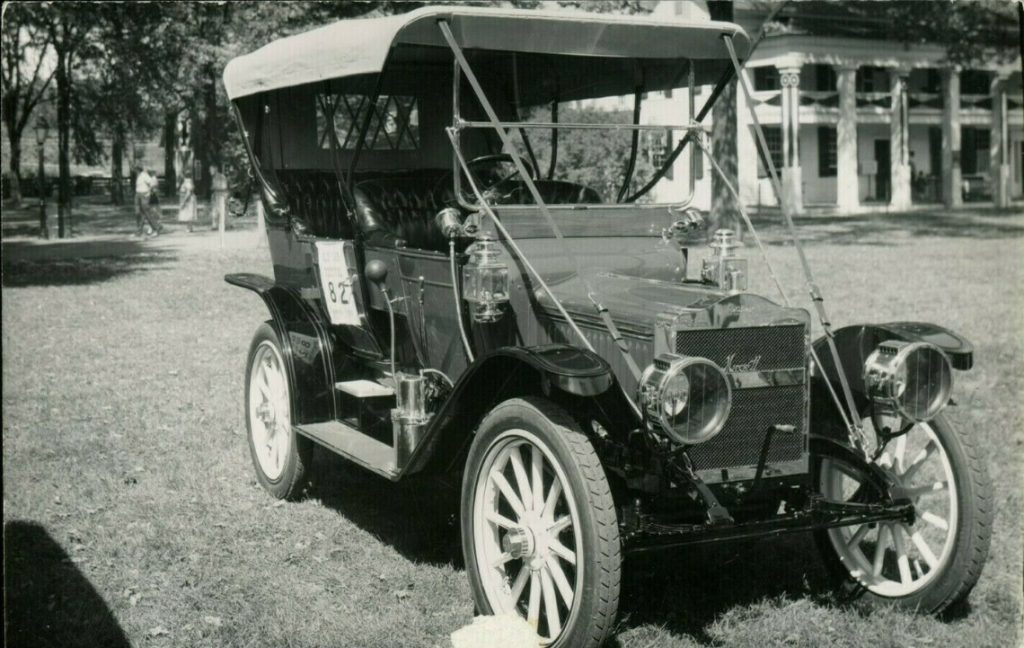
***
In 1923, Chalmers Motor Company merged with Maxwell Motors, ultimately forming the basis for the Chrysler Corporation.
Thank you for this interesting story. I have some nice “Real Photo” cards of automobiles. This one is getting cranked.
Cars still come with a lot of the same modern amenities that Chalmers cars had, including self-starters, rain vision (windshield wipers?) and windshields, but whatever happened to the power tire inflators? They only cost about $50 to $100 now but were they actually standard equipment on the Chalmer?
Te story was interesting and fun to read. I especially enjoyed the lead in to the story.
Fascinating story! Thanks for sharing it with us!
I first learned of the Maxwell when I learned it was the car Jack Benny’s character drove on his radio program.
Thank you for this story. I enjoyed reading such interesting stories of the past.